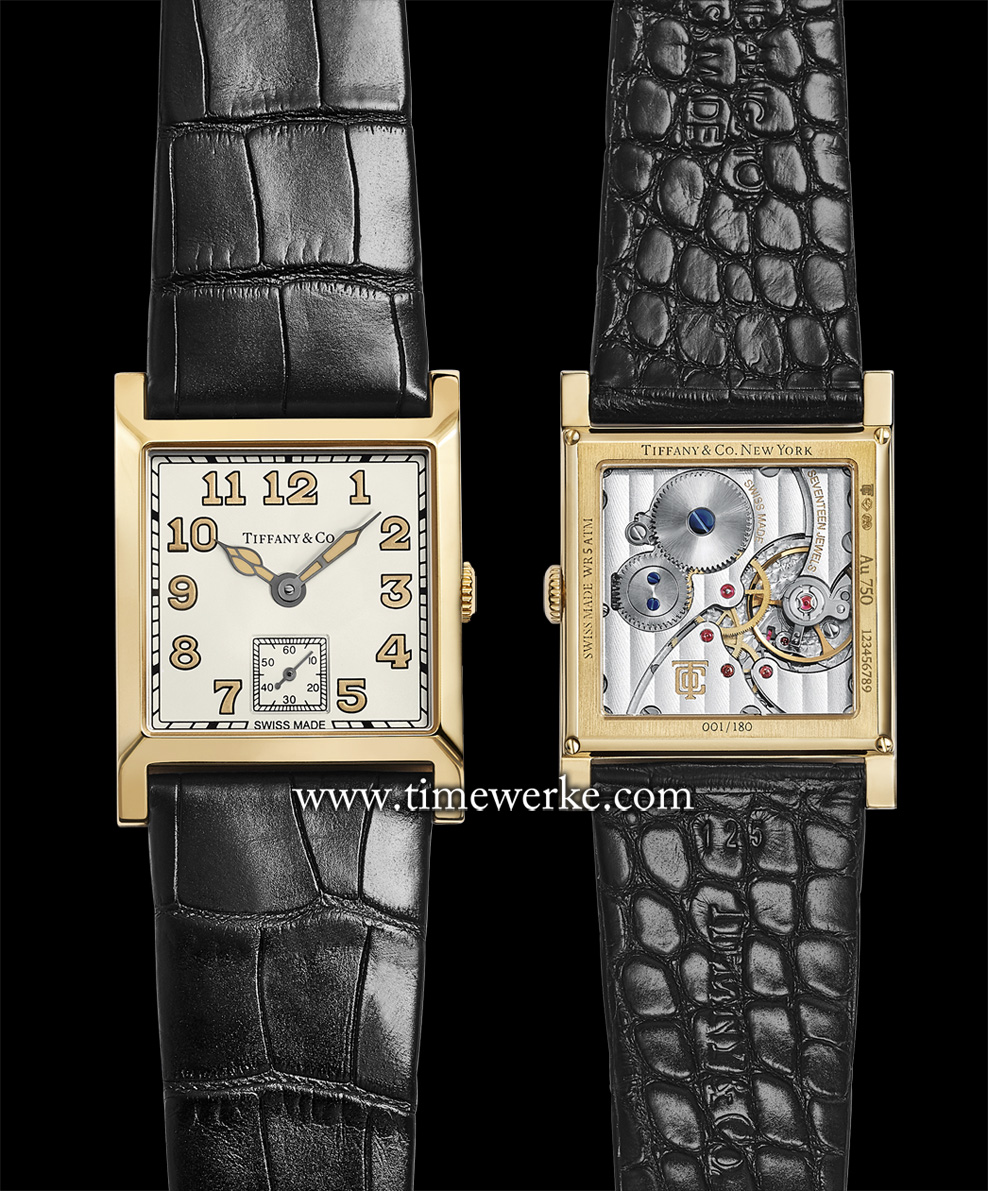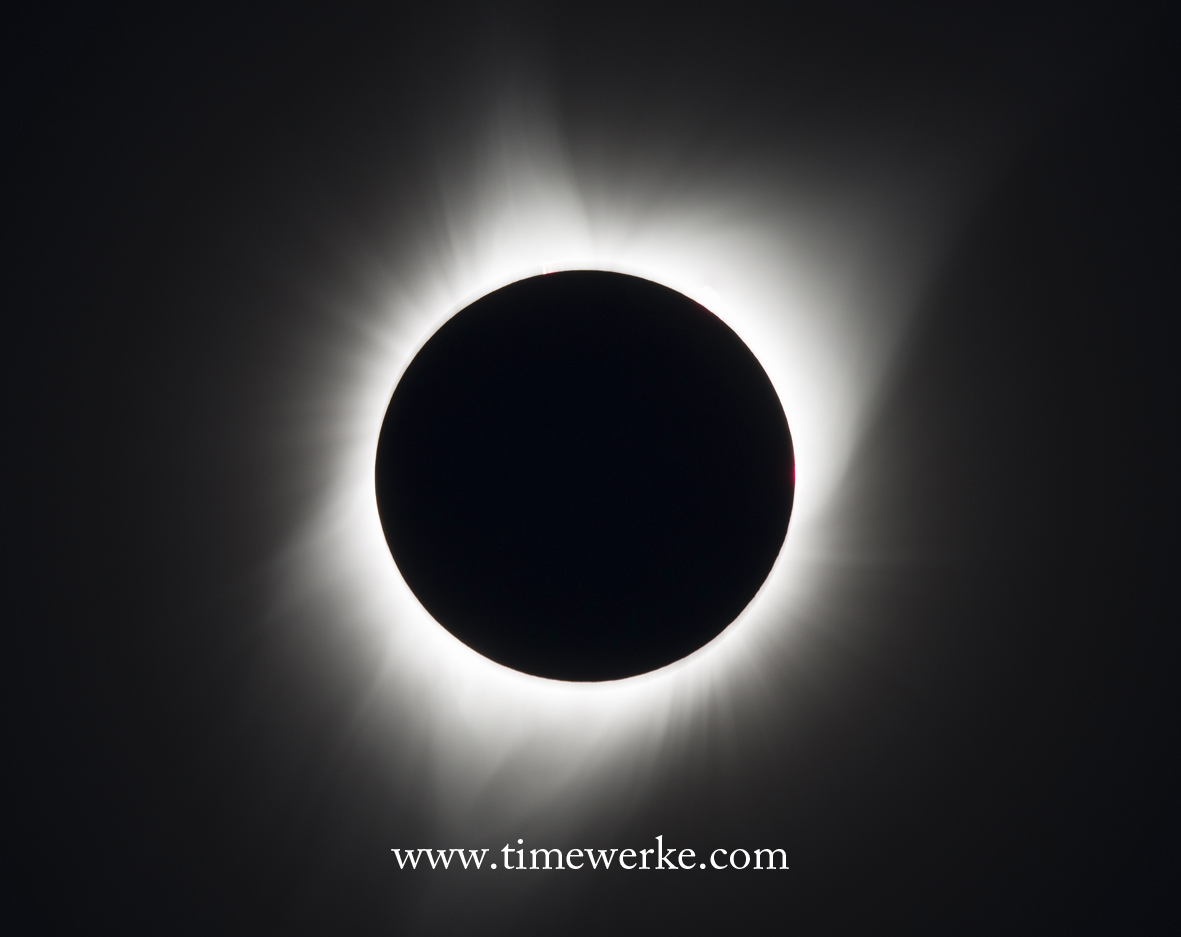
Tiffany Square Watch commemorating the 180th anniversary of the brand’s founding (1837 to 2017). It features an in-house manual-winding movement housed in a 27mm by 35.88mm case in 18K yellow gold. Limited to 180 pieces and priced at SGD21,500. Photo: © Tiffany & Co.
The Tiffany Square Watch is not just a commemorative piece for the 180th anniversary of the brand’s founding (1837 to 2017), it also marks “… a return to in-house calibre manufacturing with a rare square manual-winding movement.”
This in-house Tiffany movement, housed in a 27mm by 35.88mm case in 18K yellow gold, is described as one that has been “… designed, engineered and manufactured by the brand’s craftsmen in Switzerland”.
The Tiffany Square Watch exudes a strong vintage feel. This should not come as a surprise as its design was inspired by a 27mm square Tiffany watchcase from the 1920s.
This in-house Calibre is a form movement as it fits its square case. “This timepiece is remarkably thin and has perfect proportions,” says Nicola Andreatta, vice president and general manager of Swiss Watches for Tiffany & Co.
“The large opening of the dial, the subtle use of materials and the perfect legibility are based on the idea of the perfect match between functionality and beauty.”
Tiffany & Co’s horological journey began in 1846 when clocks were acquired for their second store at 271 Broadway.
The brand’s venture into watch manufacturing is said to have commenced in 1866, a year after the American Civil War (1861 to 1865) with its factory operating at Place Cornavin in Geneva, deemed the largest of its kind back then.

